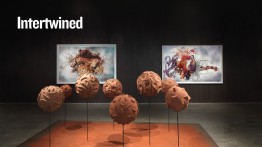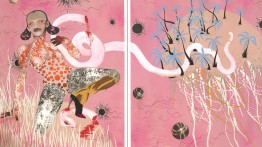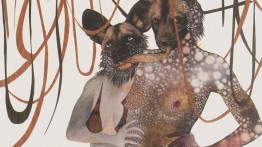COOPERMADE Wangechi Mutu
1996 graduate of the School of Art Wangechi Mutu is the subject of a major solo exhibition at New York’s New Museum, Intertwined. The show, which opened this March and runs until June, takes up the entire museum and loosely follows a chronology of the artist’s career. On view are more than one hundred paintings, collages, drawings, and sculptures presenting a full breadth of her practice from the mid-1990s to today.
Mutu, who was born in Kenya and attended boarding school in Wales, came to The Cooper Union after studying anthropology at the New School. After Cooper, she earned an MFA in sculpture at Yale. An interest in history and the creation of cultural norms is evident from her early, collage-based work in the 1990s that explores camouflage and transformation often related to Black female bodies. She has continued these investigations in a variety of media, developing hybrid, fantastical forms that fuse mythical and folkloric narratives with historical references. At once culturally specific and international in scope, Mutu’s practice consistently challenges the ways in which cultures and histories have traditionally been classified.
Her art has been shown around the world in exhibitions at the Brooklyn Museum, the Tate Modern, the International Center of Photography, among others. Four of her extraordinary sculptures appeared on the front elevation of the Metropolitan Museum of Art in New York from September 2019 to November 2020, Mutu having won the inaugural annual commission to animate the building’s façade. In 2006, she received the Cooper Union President’s Citation and was inducted into the school’s Hall of Fame three years later. In 2021, she was Cooper’s commencement speaker.
In a glowing review of the New Museum exhibition, art critic Roberta Smith noted that as accomplished an artist as she knew Mutu to be, seeing such a large body of her work in one place reveals the extraordinary inventiveness of the artist who works as a painter, video artist, and sculptor while using materials as diverse as soil from her native Kenya to bronze to tree limbs to fabric. Calling Mutu one of the most important artists of her generation, Smith said, “There doesn’t seem to be anything Mutu can’t manage.”
Join us for an exclusive guided tour of Wangechi Mutu: Intertwined.
New Museum, May 12th, 5-7 pm. Register here, spots are filling up fast.








